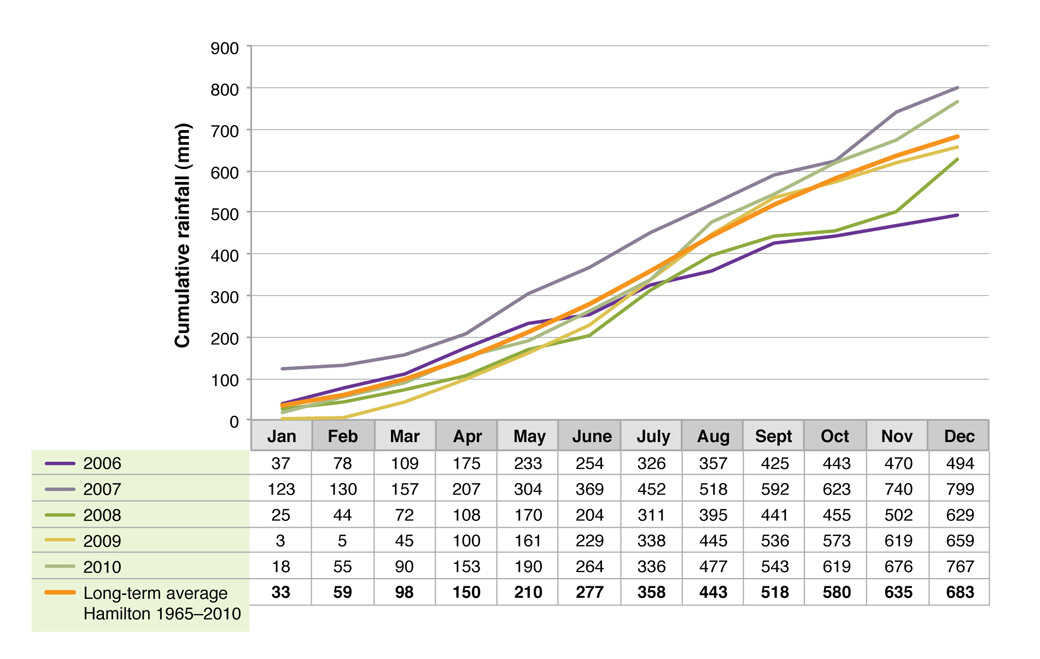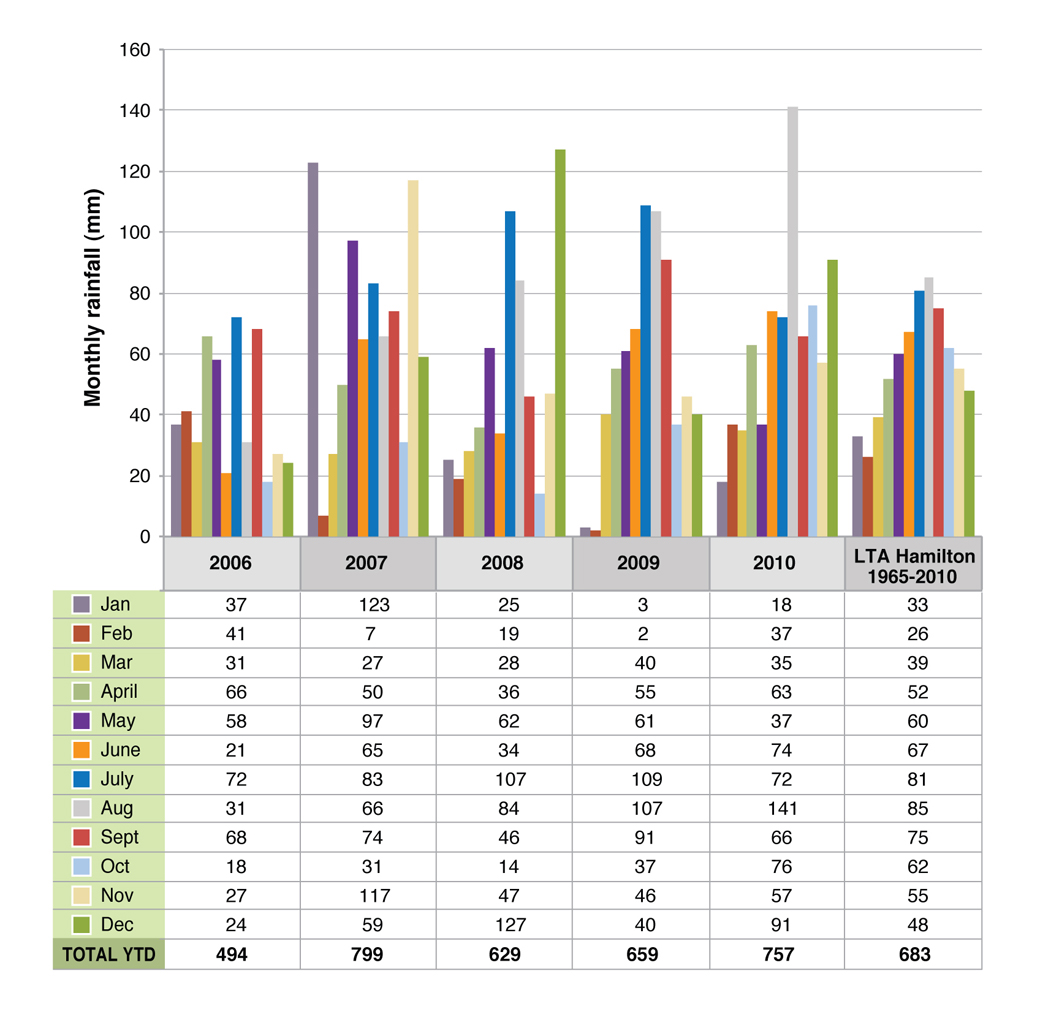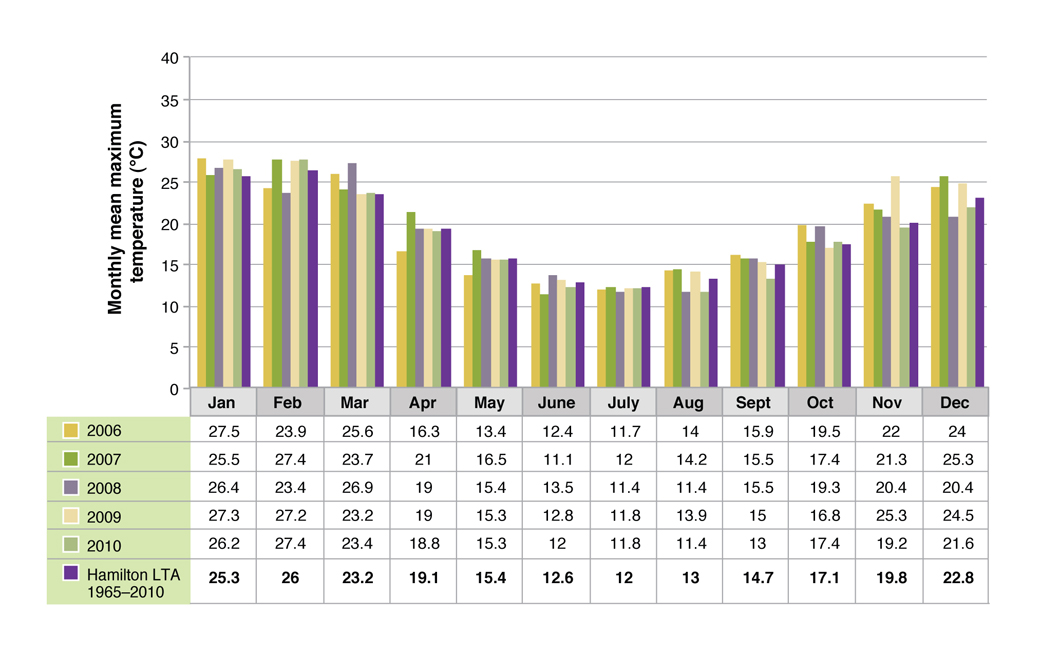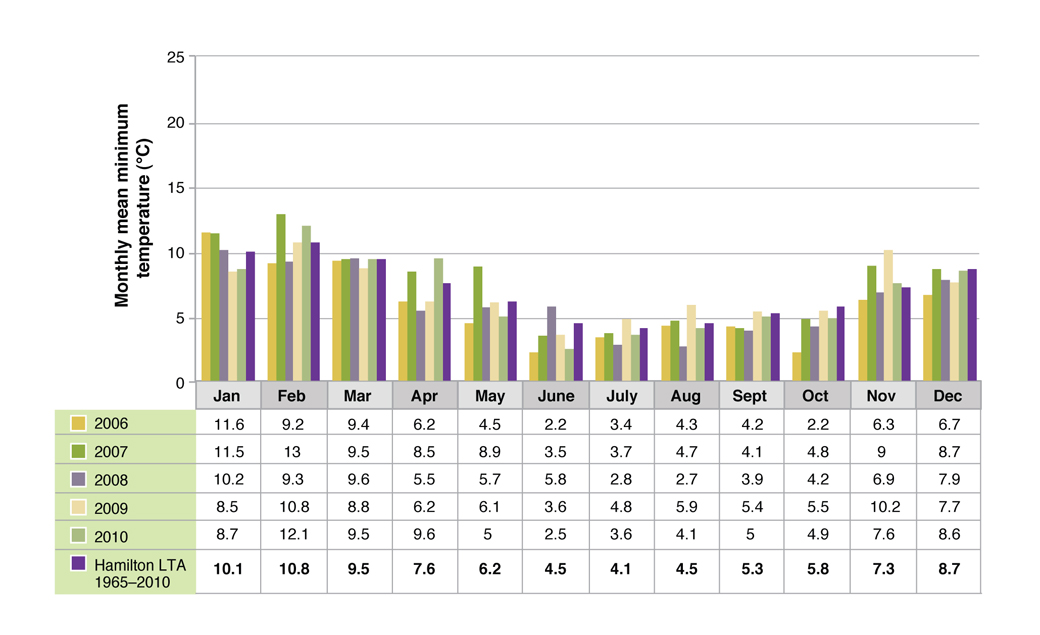Hamilton Proof Site – Climate
Compared to most other parts of Australia, South West Victoria has a reliable climate. Average annual rainfall in Hamilton is 680 mm, is winter dominant, and with a growing season of 8-9 months. Winter temperatures are relatively cold and often combined with high winds. Details of climate and variability throughout South West Victoria can be found in the Regional Information.
Figures 1 and 2 describe the rainfall during the Hamilton experiment. Annual rainfall during the experiment was below the long term average in 2006 (494 mm, decile 1) and 2008 (629 mm, decile 4), above average in 2007 (799 mm, decile 9) and 2010 (757 mm, decile 8) and close to average in 2009 (659 mm, decile 5). Seasonal rainfall deviated considerably from the long term averages across the years. The spring periods of 2006, 2007, 2008 and 2009 were notable in having months of below average rainfall. Of particular note were the low October rainfall totals in each of these years and the failure of the mid-late spring rains in 2006 that lead to low production from the perennial ryegrass pastures in particular. Other significant features were the occurrence of heavy summer rainfall events in January 2007 (123 mm, decile 10) and December 2008 (127 mm, decile 10) and heavy winter rainfall in July 2008 (107 mm, decile 8) and July 2009 (109 mm, decile 9). The heavy summer rain events allowed the summer-active species such as lucerne and tall fescue to respond and grow valuable green feed through to autumn.
Figures 3 and 4 describe annual average maximum and minimum temperatures for the Hamilton experiment. The growing season (defined as the sustained growth of perennial ryegrass) commenced in mid-April 2006, late April 2007, 2008 and 2009 and early April 2010. Mean monthly maximum temperatures in spring and summer were above the long-term (1965-2010) averages for each year of the trial at the site. A contributing factor to these high summer temperatures were the relatively large number of very hot days occurring over these summers including 18 days > 30o C and nine days >35o C during the low rainfall months of January and February 2009. Monthly mean maximum and minimum temperatures during winter were below the long term averages during 2006 and 2008.





